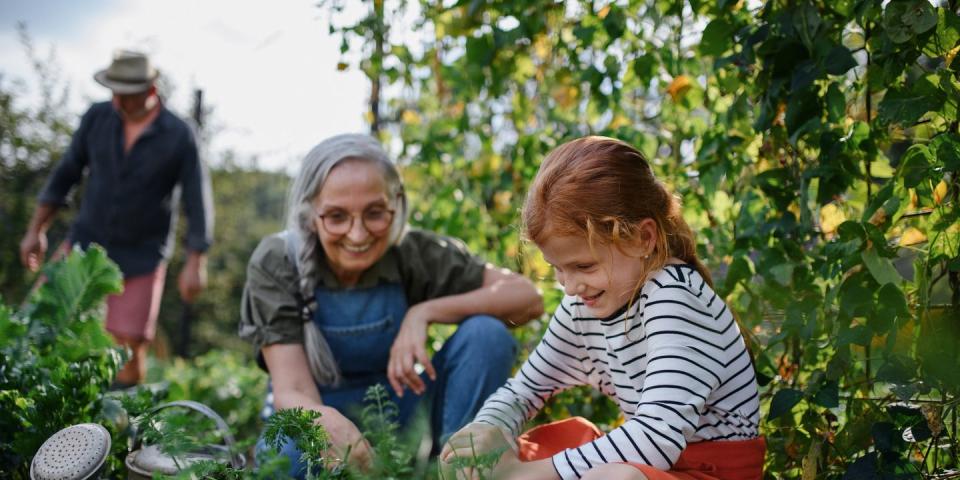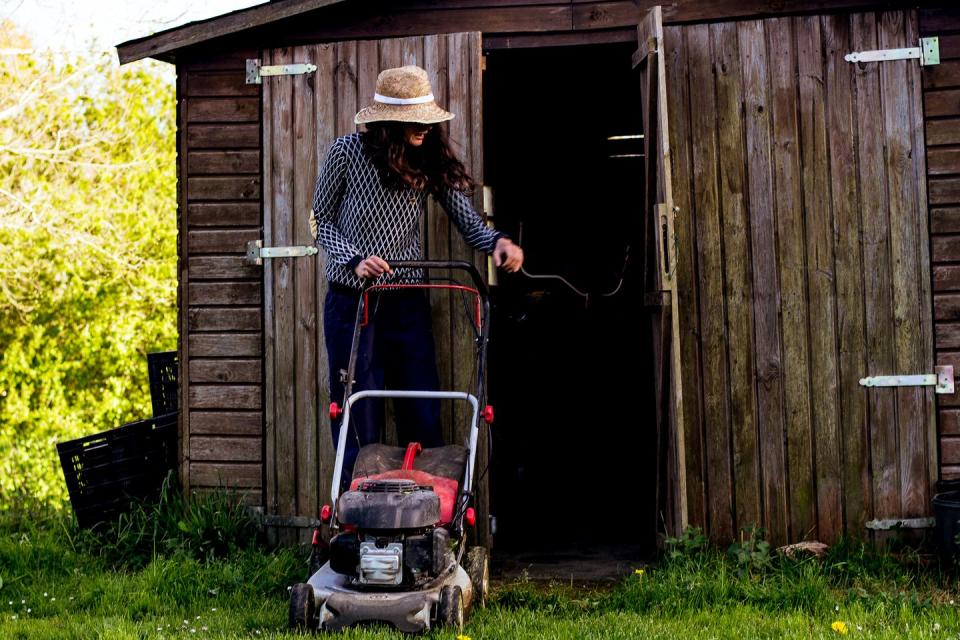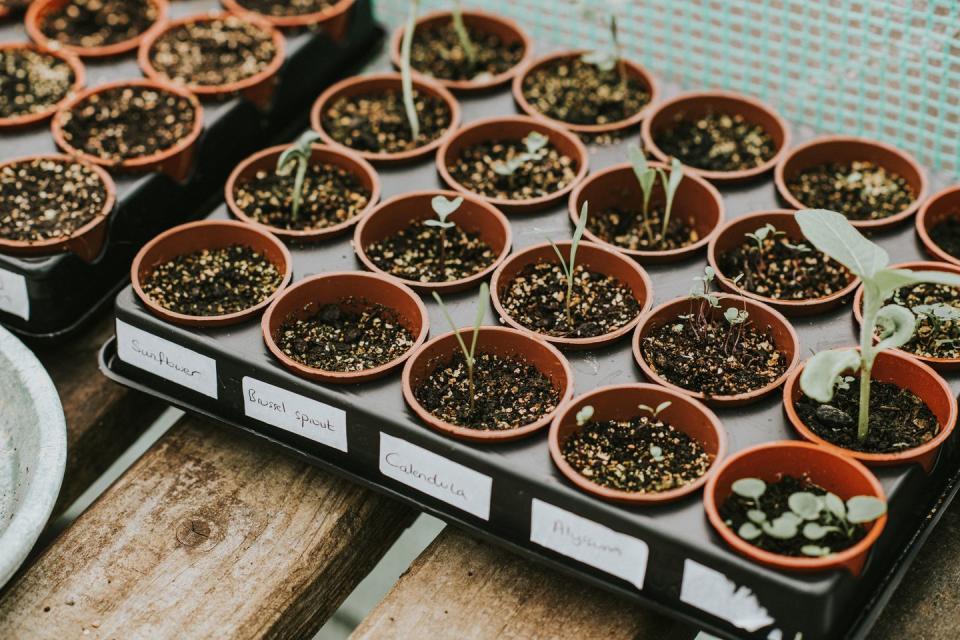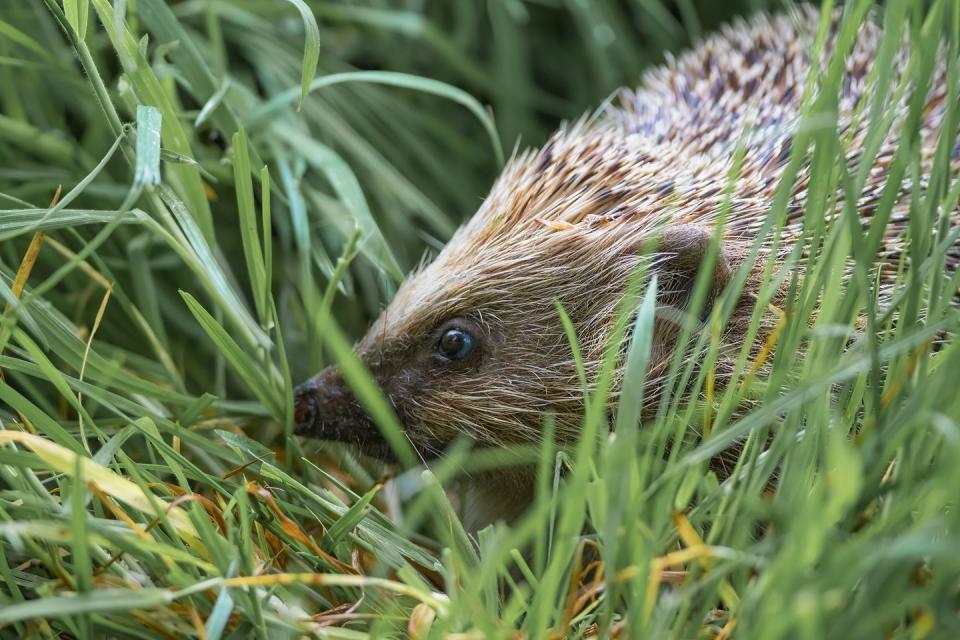10 tips for eco-friendlier gardening

It's the time of year when the green-fingered among us have the opportunity to spend plenty of quality time in the garden or on the allotment. If you've been happily potting on, pruning and generally keeping your green space looking its best recently, you may have started to consider how you can adopt more eco-friendly gardening habits.
Luckily, it's easier than you think to be greener in the garden. Here are nine gardening resolutions you can make, along with all the information you need to put them into practice.
1. Mow your lawn less
If ever there was a good excuse for being a little more lax with your mowing regime, this is it! While a patch of neatly clipped lawn is a standard feature of many British gardens, it can be a wasteland for biodiversity.
However, the charity Plantlife, which works to restore and protect wildflower meadows throughout the UK, says that mowing one patch of your lawn less from March to September, and particularly in May, can give wildflowers and the pollinators that depend on them a real boost.
“May is a crucial month for flowering plants that need to get a firm foothold but we are not advocating never mowing after May,” explains Oli Wilson from the National Plant Monitoring Scheme. “Plantlife guidance across the year recommends a layered approach to the garden cut, where shorter grass is complemented by areas of longer grass. This two-tone approach boosts floral diversity and nectar and pollen production through the year.”
Gardeners who took part in the Plantlife 'No Mow May' campaign reported a whole range of plant species appearing in their lawns, including wild strawberry, snake’s-head fritillary and even wild orchids, along with dozens of different bees, moths and butterflies.

2. Reuse plastic plant pots
It’s a notoriously thorny issue, if you’ll pardon the pun, but once you’ve planted out bedding in your borders, what do you do with the plastic pots the plants came in?
If you can, give them a second life. "Consider re-using pots where you can for seed sowing and re-potting rather than buying new," advises Guy Barter, Chief Horticulturalist at the RHS. "Just rinse them out with warm water and detergent before using again to kill off any diseases." If you can't make use of them, a neighbour, a local allotment association or a school might be able to, so it's worth asking around.
3. Avoid black plastic plant pots
If you really can't find plastic plant pots a new home, you should be able to add terracotta-coloured plastic plant pots to your recycling bin if your local authority accepts plastic bottles and food tubs in its kerbside collection scheme. You can check – or find a local plastics recycling point – using the Recycle Now Recycling Locator.
However, as things currently stand, the widely used black plastic plant pots can’t be recycled at all because the pigment in them can’t be detected by the sorting equipment at most recycling plants.
Things are changing, though. Over the last few years, the Horticultural Trades Association (HTA) has worked with plant retailers, first to develop and then to roll out the new taupe-coloured plastic plant pots that you've probably seen popping up in garden centres. These can be detected by waste sorting machinery so are more straightforward to recycle.
In the meantime, check with your local gardening centre to see if it collects black plastic plant pots for specialist recycling, or re-use existing pots lurking in the shed.

4. Always check compost is peat-free
If left intact, the peatland that is dug up to source the peat that's used in some compost absorbs and stores carbon, so it plays an important role in tackling climate change. From next year onwards, you'll only find peat-free compost on sale from retailers in England thanks to a government ban, and some retailers have already removed compost containing peat from their product ranges. In the meantime, it's worth checking the composition of any compost you buy for use at home.
5. Look for alternatives to plastic
Many garden suppliers stock biodegradable paper, bamboo, grass and wood pulp pots and seed trays, which are a great alternative to plastic pots if you’re growing plants from seed.
Try making your own biodegradable seedling pots from old newspaper, using the Pat a Pot Gardening Kit or plant seeds in wood pulp-based, bio-degradable Peat-Free Pots. These can be planted directly in soil, where they will break down.
When you’re sowing seeds or planting out seedings, opt for plant labels made from natural materials over plastic ones, like these Slate Plant Labels.
Buying bare root plants can be economical and does away with plastic plant pots altogether, although plastic may still be used to package your order. You’ll need to plant them soon after purchase or delivery, though.
6. Use less water
We all want our gardens to look their best throughout the summer, and this often requires regular watering. To reduce your garden’s drain on the mains water supply in hotter, drier weather, think about installing a water butt, mulching flower beds and using ground cover plants to reduce moisture evaporation and cool soil down.
For more ideas, read our guide to creating a more water-efficient garden.

7. Recycle compost bags
Some garden centres, such as Squires, accept empty compost bags in their recycling collection points. If your local garden centre does, save up spent compost packaging in a corner of the shed and take it along to recycle next time you go to stock up on bedding plants and gardening essentials.
8. Plant wildlife-friendly plants
You can lay the groundwork for a more wildlife-friendly winter garden when you're planning what to plant in late spring and early summer, too. Benedict Dempsey, wilder UK landscapes advisor at WWF, recommends choosing plants with seed heads, such as teasels, which are particularly good for providing wildlife with food in the leaner months of the year and look great in winter, too.
"If you have the space, think about any new trees and shrubs you can plant during winter (October–April is the best time to plant) to provide food and shelter for wildlife – especially if you choose species with berries or fruit," he says.
Choosing pollinator-friendly plants with a simple flower structure (these are easier for insects like bees, butterflies and other pollinating insects to food from). The Wildlife Trusts suggest things like primroses, heather and honeysuckle. Try to choose a range of plants that flower at different times, or have a long flowering season, to provide food for pollinators throughout as much of the year as possible.

9. Make your own compost
Even in a small garden, with the right know how you can get started making your own compost, which helps reduce food waste and can save you money on bagged compost. You can find everything you need to know about taking your first steps towards composting here and choosing a compost bin here.
10. Cut back plants less
The winter months can be tough for the wildlife that frequents our gardens, but there's still plenty you can do to help at this time of year. Benedict from WWF urges gardeners to resist the temptation to tidy up too much during the growing season, and to keep parts of the garden a bit messy.
"Waiting until the end of winter to cut back hedges, ivy, flower stems and seed heads will provide food and shelter for birds, and habitat for insects," he explains. "If you do want to do a bit of a tidy, bundle up sticks to make homes for insects and other invertebrates. You can also gather fallen leaves and rot them down to make leaf mould, which can be used as a nature friendly mulch, or just spread fallen leaves over your flowerbeds to provide a home for frogs and invertebrates, and foraging habitat for birds."
Cutting back your garden less is particularly beneficial in the winter, agrees Claire Gibbs from Surrey Wildlife Trust. "A wilder winter garden with overgrown hedges and borders, long grass, seed heads and heaps of autumn leaves, will offer food and shelter for wildlife through the colder months. Leave cutting back till spring."
Finally, look out for animals that may be waiting out the winter in your garden, and try not to disturb them. "You might find newts under pots, hedgehogs in piles of sticks, and some species of butterflies in sheltered spots like a shed," Benedict advises.
You Might Also Like

 Yahoo Finance
Yahoo Finance 